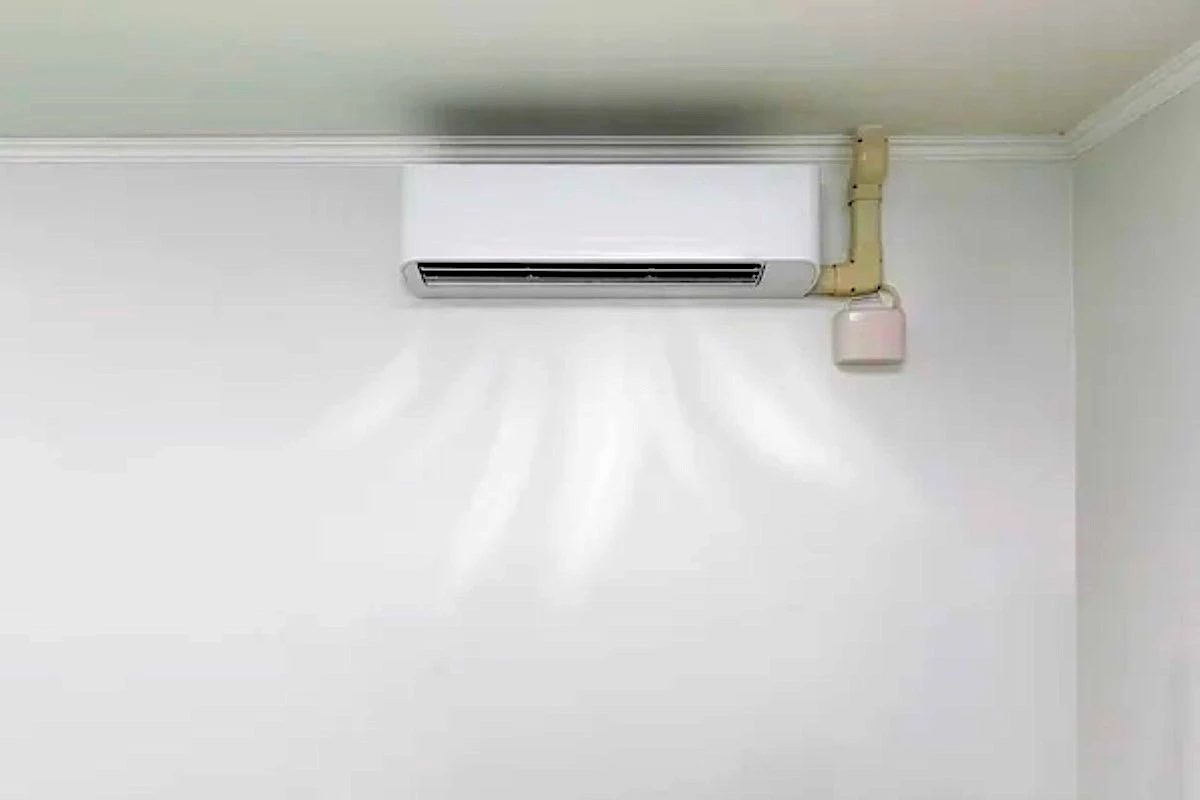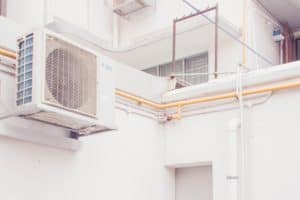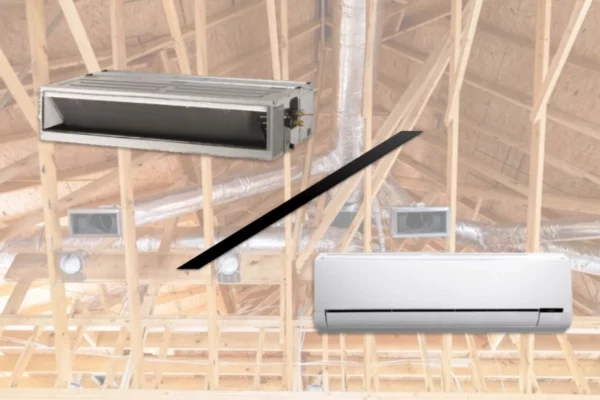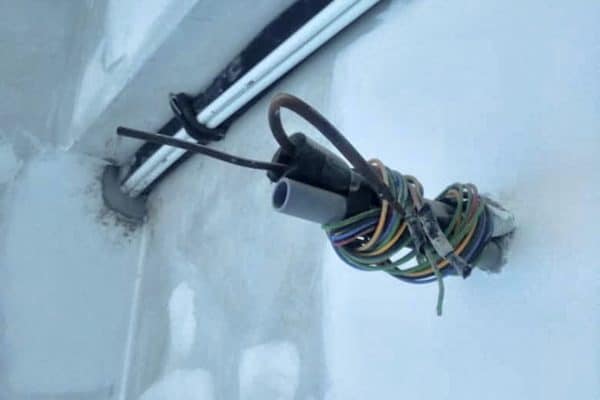Do Mini Splits Need a Condensate Pump?
If you’re interested in a mini split system, you may be wondering why do many mini split installations require a condensate pump. But, do mini splits actually need a condensate pump? In this blog post, I’ll explain everything you need to know about it.
Generally, mini splits don’t need a condensate pump to function because they use gravity-based drainage. However, if a mini split can’t drain by gravity, then a condensate pump is necessary.
Although mini splits generally don’t require a condensate pump, there are a few instances where a condensate pump is a good idea. Let me explain with some examples.
What is a Mini Split Condensate Pump?
A mini split condensate pump is a small condensate pump made for mini splits that help lift the condensate water produced by mini splits. It has a smaller flow rate and head than the condensate pump used in furnaces and air handlers.
When a mini split runs, it produces condensate water. The condensate water gathers in the condensate water tank. The condensate water pump automatically runs when the water reaches a pre-set level and stops when the water level drop to a pre-set level.
Some mini split condensate pumps have an auto shut-off function that stops the mini split operation when the condensate water level is too high to prevent overflow.
By the way, if you want to learn more about mini split especially how to design it for your house, consider my Mini Split (eBook). You’ll learn what is Mini Split, how to choose and more importantly, spark more design ideas to improve the energy efficient of your house. But, if you need a second opinion or want someone to help you design, then you can consider my consultation service.
Consultation Service
Ask me for HVAC advice such as brand selection, best model, benefits, features, placement, duct size, grille size, how to design, design check, verification and other HVAC related queries.
When Do Mini Splits Need a Condensate Pump?
Mini splits use gravity-based drainage. They are connected to a sloped drain pipe to discharge the condensate water produced by the cooling and dehumidifying process. Hence, there is no need for a condensate pump.
However, if you place a mini split in certain locations, you might end up needing a condensate pump. I wrote an article about where to put a mini split indoor and outdoor unit. I suggest you read it so that you won’t miss out anything important.
For example, if a mini split happens to be installed below ground level, say the basement, then a condensate pump is definitely needed to lift the condensate water to ground level.
Lifting the Drain Pipe to Increase the Gradient
Another instance you may need a condensate pump for your mini split is when you don’t have a sufficient gradient for the drain pipe.
In order for a mini split to drain properly, the drain pipe must have a sufficient gradient.
The industrial standard for the gradient of an air conditioner drain pipe is a minimum of 1/100, meaning for every 100 feet of pipe, the slope must decrease by 1 foot.
This requirement is also stated by mini split manufacturers like Daikin. I quote the below statement:
“Keep the drain pipe short and sloping downwards at a gradient of at least 1/100 to prevent air pockets from forming.”
Daikin North America
Sometimes, you may not be able to get such a minimum gradient. If left unattended, the condensate water will flow very slowly inside the drain pipe and “jelly” or slime can build up very quickly in the drain pipe which can lead to a clog.
Drain Pipe Raise
To ensure there is a sufficient gradient, you can execute a drain pipe raise and with a drain pipe raise, you need a condensate pump to lift the condensate water.
A drain pipe raise is a way to improve the drainage of a mini split. Basically, you raise the drain pipe to about 1-2 feet above the mini split. This will give the drain pipe sufficient gradient to discharge the condensate water quickly. The below diagram illustrates the said installation:

Such a drain pipe installation method is more commonly seen in ceiling cassette mini splits. Since they’re installed on the same level as the ceiling, their drain pipe may not have enough gradient without a raise.
Fortunately, ceiling cassette mini splits come with a built-in condensate pump and thus, they have no issue with raising their drain pipe.
Wall-mounted mini splits and other types of mini splits may also need a drain pipe raise, depending on their installation location and the layout of the house. If you need a drain pipe raise, a condensate pump is necessary.
Many people don’t know that mini splits actually have quite a few indoor unit types to choose from. Apart from the most common wall-mounted unit, we have the ceiling cassette and 3 other types. I recommend you check out my article about the different types of mini split indoor unit alongside their pros and cons if so that you make a more informed decision.
Concealing the Drain Line Above the Ceiling
Another instance where you may need a condensate pump for your mini split is when you want to conceal the drain line above the ceiling for aesthetic reasons.
Most of the time, mini splits are installed on the inside of an exterior wall. That way, the drain pipe can be discharged directly to the outside by simply punching a hole through the wall. This is the most common way to drain a mini split.
However, some mini splits have to be installed on the interior wall.
For instance, a mini split in a bedroom located at the center of the house. In such a case, the lines have to run along the surface of the interior wall which is a problem with regard to the interior aesthetics of the house.
The below photo is an example of such an installation:

Many homeowners simply cannot accept the fact that there is a mini split line exposed inside their house. It is just too ugly to bear. Hence, they look for ways to resolve this issue.
One way to completely get rid of the refrigerant and drain pipes of a mini split on your wall is by concealing the mini split lines inside the wall. I explains and demonstrates with sample photos in an article I previously wrote. Do check it out if you’re thinking of concealing the lines.
Some people run the refrigerant line above the ceiling so that there is less stuff on the interior wall. The mini split refrigerant line is pressurized and thus, it can bend upward and run into the space above the ceiling.
However, the drain pipe cannot do that. So, they end up with something like the below photo:
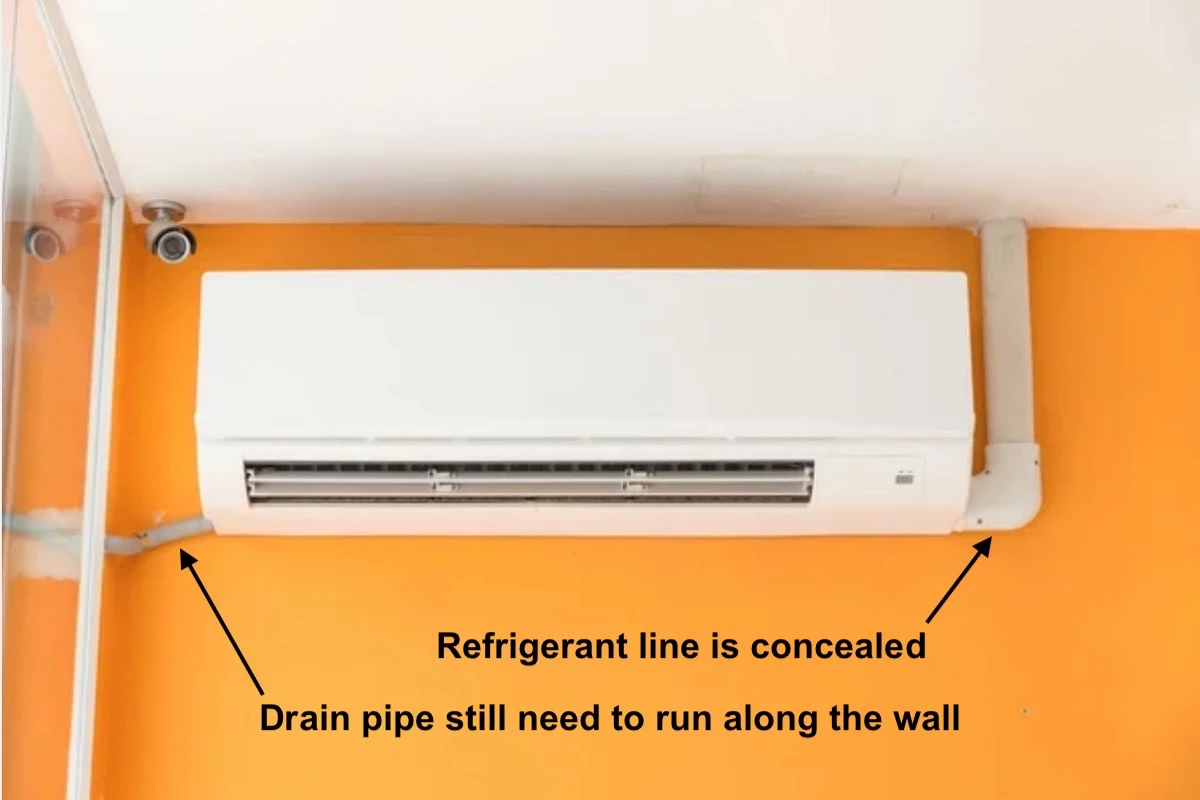
The above photo is a more gentle version of the installation. I’ve seen much worse installations, especially when the mini split is located far away from the exterior wall.
Hence, a condensate pump can be used to allow the drain pipe to bend upward and run alongside the refrigerant line into the space above the ceiling. The below photo is an example of such an installation:
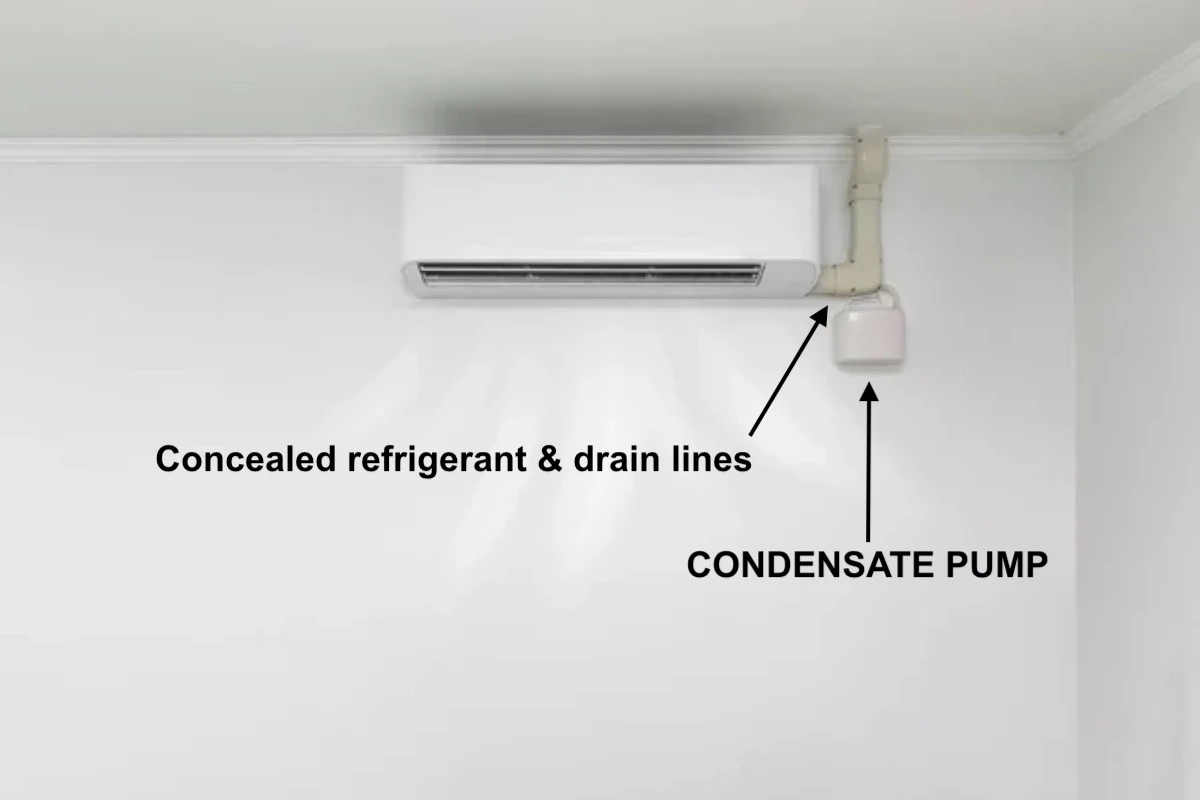
With a condensate pump, you can conceal and run the drain line above the ceiling. You’ll still see a little bit of the mini split lines on the wall but with some decoration, it may not look so obvious.
Do Mini Splits Come with a Condensate Pump?
Most types of mini splits including wall-mounted, floor-mounted and ceiling ducted don’t come with a built-in condensate pump. Only ceiling cassette mini splits come with a built-in condensate pump.
“The drain pan of a ceiling cassette mini split channels the condensate water to a corner where a condensate pump will suck the water out of the drain pan and discharge it through the external drain pipe.” from How Ceiling Cassette Mini Splits Work.
Mini split manufacturers usually offer a condensate pump as an optional accessory.
So, if you need a condensate pump for your mini split, I recommend you purchase one directly from the same manufacturer. It is often more expensive but works better.
Mini Split Condensate Pump Installation
The installation of a mini split condensate pump is simple. However, there are many types of condensate pumps on the market. The best is to choose one that is designed for mini splits.
Usually, they have a flat side that you can mount on the wall.
This FUJIWARA Condensate Pump on Amazon is great for mini splits. It has a sleek design and a flat side for wall mounting applications. It is also as quiet as a mini split condensate pump should be.
Sometimes, you’ll find a mini split condensate pump that has different tank sizes. Choose a larger tank size if you don’t want the pump to cycle on/off too frequently.
Also, some of them come with overflow protection which shut off your mini split if the pump failed so the water won’t overflow. Choose this if for better protection and you’ll have to wire it to your mini split.
Lastly, pay attention to the lifting height of the condensate pump, the FUJIWARA that I suggested has a lifting height of 32 feet. That means the maximum height you can raise the drain pipe is 32 feet.
If you raise it beyond 32 feet, the flow will be reduced and the pump will cycle on/off more frequently. If you overdo it, there may not be any flow at all.
The location of the condensate pump should be lower than the mini split drain outlet to allow the condensate water to flow via gravity to the condensate water tank. After the condensate pump, you can raise the drain pipe vertically and run it into the ceiling space.
If you’re using a condensate pump, make sure your concealed drain pipe has sufficient gradient as the pump is not designed to push the water all the way to the outlet. Otherwise, keeping the drain pipe sloped upward within 32 feet of height works as well.
Lastly, consider my Mini Split (eBook) if you want to know how can you use Mini Split in your house. If you still have doubt or not feeling confident enough, feel free to consult me.
Consultation Service
Ask me for HVAC advice such as brand selection, best model, benefits, features, placement, duct size, grille size, how to design, design check, verification and other HVAC related queries.


